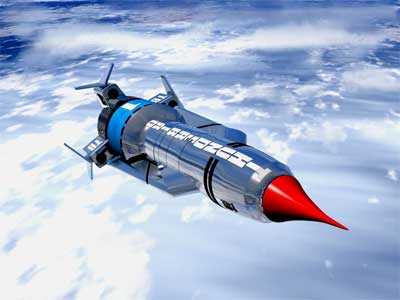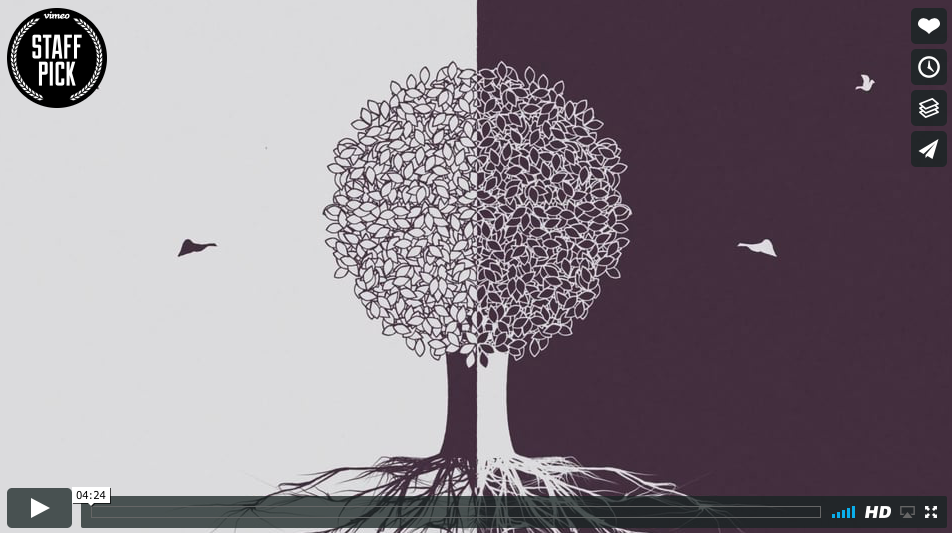One of my favorite things in this world is the exploration of “future” as dipected in 1960’s pop culture.

This post introduces the Thunderbirds – a TV series that ran in the UK during the mid-sixties. The content was quoted from a Wikipedia entry.
Set in the 21st century (stated to be 2026 in the series, retconned to 2066 in the movie Thunderbirds Are GO), Thunderbirds depicts the adventures of the Tracy family, which consists of construction tycoon and former astronaut Jeff Tracy and his five sons, Scott (pilot in charge of Thunderbird 1), Virgil (pilot in charge of Thunderbird 2), Alan (astronaut in charge of Thunderbird 3), Gordon (aquanaut in charge of Thunderbird 4) and John (astronaut in charge of the space station Thunderbird 5). Scott, Virgil, Alan, Gordon and John were all named after Mercury astronauts – Scott Carpenter, Virgil Grissom, Alan Shepard, Gordon Cooper and John Glenn. Together with Jeff’s elderly mother, the scientific genius and engineer “Brains”, the family’s servant Kyrano and his daughter Tin-Tin, the Tracy family live on a remote, uncharted Pacific island. They are, in secret, the members of International Rescue, a private and highly-advanced emergency response organization, which covers the globe and even reaches into space, rescuing people with their futuristic vehicles, the Thunderbirds.
Tracy forms the idea of International Rescue after the tragic death of his wife – never named in the series, but commenly called ‘Lucille’ within fandom. Buying a small island in the Pacific and secretly converting it into the secret rescue base for IR, he convinces engineering genius Brains (who also uses codenames Hiram K. Hackenbacker & Homer Newton III – his real name is unknown) to help him bring IR into operational reality, designing and constructing a series of fantastic machines and equipment. Key to this are the five Thunderbird craft and the many Pod Vehicles transported by TB2.
Some of the disasters attended by International Rescue are the result of accident or misadventure, but many are caused by deliberate sabotage. A recurring villain, “The Hood” (actually never named in the series, but given this name in the comics, tie-in books and other spin-off media), frequently causes major accidents in order to lure International Rescue’s vehicles to the scene and spy on or steal them. Another complication is that The Hood’s half brother, Kyrano, is the Tracy’s servant, and because he has some degree of psychic power over Kyrano, The Hood is able on one occasion to compel him to sabotage Thunderbird 1’s security systems. Kyrano’s daughter TinTin is romantically linked with Alan Tracy, as well as participating in many IR missions.
International Rescue’s London agent, international socialite Lady Penelope Creighton-Ward, and her cockney butler/chauffeur Aloysius “Nosey” Parker, are often seen chasing The Hood and other villains in the pink, amphibious Rolls-Royce FAB 1, which is equipped with James Bond-style gadgets. (Rolls-Royce actually provided an authentic radiator grille to the production company for closeups of FAB 1, such as when the retractable machine gun was fired) Lady Penelope’s yacht was called FAB 2.
The characters use the radio sign-off “F.A.B.” rather than “Roger” or “Over and out”. Anderson was often asked what F.A.B. stood for, but in fact it simply stood for “fab” (short for “fabulous”), a 1960s catchphrase. Later this was unofficially decided to mean Fully Advised and Briefed, following on from P-W-O-R (Proceeding With Orders Received), a similar radio confirmation code in the series Stingray. In Anderson’s next series, Captain Scarlet and the Mysterons, S.I.G. (Spectrum is Green) would continue the tradition of initialled call signs.



Sir,
I very interested in purchasing someof your Thunderbird prints. Please let me know the available sizes and prices.
Thank you!
Vint Keener
Hi Vint,
I didn’t create these prints. Good luck in your search – please let me know if you come across any.
Thanks,
Joe